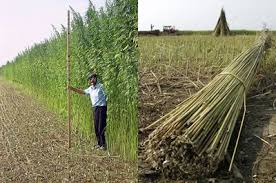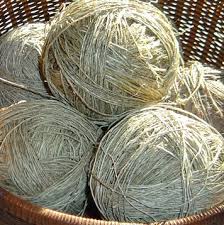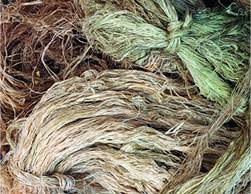A textile is any flexible network of threads or yarns. From ancient times humans have made textiles using various fibers from plants, animals, and even metals (such as metallic embroidery threads). Textiles include clothing, baskets, shelters, and cords.
Ancient natural plant fibers used in the creation of thread have been flax, hemp, ramie, and cotton.
 |
| Flax and fiber results |
Dyed flax fibers dated by archeologists to 34,000 years ago have been found in caves in the Republic of Georgia.
 |
| Cave in the Republic of Georgia where flax fibers were discovered |
Microscopic dyed flax fiber found in this area of the world that lies at the border between Asia
and Europe and which has been inhabited since Paleolithic times suggest that textile technologies
were known even in prehistoric times. Elizabeth Barber, retired professor from Occidental University says, "plain old string was a powerful technology, which helped people weather the last ice age." Today flax fibers are used to make the type of cloth called linen.
Hemp is a plant which like ramie contains "bast" fiber in the stalks. Hemp is a plant of multiple uses. Again originating in the Far East and in use for thousands of years, this plant has been very important for not only textiles, but also for oil for burning in lamps, medicines, paper, ropes, and a multitude of other products. Now banned to be grown in the U.S., the major source of hemp is from China.
 |
| China supplies much hemp. |
 |
| Hemp plants are illegal to grow in the U.S. |
 |
| Hemp fibers |
 |
| Textile made of hemp |
And here's an interesting fiber used in ancient times that is making its way back into use -
Ramie
 |
| Another name for the Ramie plant suggests its region of origin - China Grass |
 |
| Ramie stalk fibers |
The Ramie plant has extremely long fibers contained in it's stalk.
 |
| Ramie fibers |
|
|
|
 |
| Ramie yarn ready for use |
 |
| Textile made from ramie |
Ramie is similar to linen, but more lustrous like silk and much stronger than cotton.
Historical information has been discovered which indicates the use of this fiber began in Eastern Asia in prehistoric times and its use spread into Europe by the time of the Middle Ages.
 |
| Egyptian mummy |
From 5000-3000 B.C., ramie was used in Egypt as a wrapping for mummies.
In Asia, Ramie was woven into cloth for nobility while Hemp was common for the peasant class. Today, Ramie is not readily available in the U.S. Most ramie is consumed by the countries where it is produced, China, Thailand, other countries in East Asia with some exports to Europe.
 |
| Cotton on the plant |
More than
5000 years ago, cotton was grown in the Indus Valley which is now in
modern day Pakistan. Cotton was also grown and used to make clothing in
ancient Egypt. Cotton was imported into the southern United States in
the 17th century.
Cotton
comes from bushes that produce seed pods filled with ball-shaped
clumps of white fiber. Sometimes called vegetable wool, the balls contain sticky seeds. The seeds are
removed mechanically from the fiber after picking the fiber "bolls" from the
plant. Threads are spun from the white fiber that remains.
 |
| Modern day cotton fabric with ancient Egyptian replica print |
Once a yarn or thread is available, techniques used to make a textile
include weaving, knitting, crocheting, knotting, or the process called
felting which uses pressure and heat to anneal fibers together.
A
textile can become something as utilitarian as a grain or flour bag, or
as luxurious and rich as a wedding gown or Persian rug,
 |
| Persian rug |
or even be used in the tech industry in such space age items as bullet proof vests or nano wire circuitry.
 |
| Nano circuit from a Berkeley project in 2008. |
This blog post sources:
NPR Article - These Vintage Threads are 30,000 Years Old
Fiber Watch: An Ancient Textile is Making its Way Back
Extract in Science Magazine - 30,000 year old wild flax fibers
Berkeley Nano Circuitry Project






















